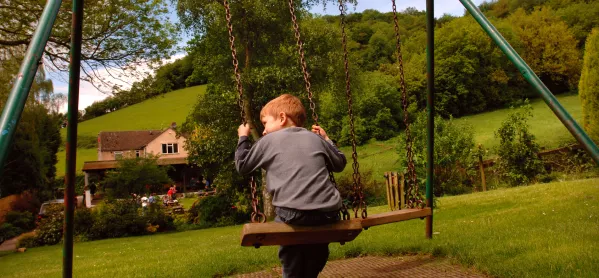It’s 2:05pm. Sarah is teaching her Year 10 class. Carly isn’t doing what she should be. Sarah wonders: is it really worth the hassle to challenge her on it?
She sees a sea of faces look back at her, desperate to learn. Sarah reminds herself that she owes it to the class to challenge the disruption. Within seconds, though, Carly is ready to launch a chair at anyone in her path.
Read more: 7 ways to handle confrontations with parents
From the magazine: The reading project that helps both adults and students
Listen: Computer games: are we worrying too much?
Sound familiar? It shouldn’t. But for some, this is a frustratingly regular occurrence. In such situations, teachers need to be able to remove students from their classrooms for the safety of others - and to allow learning to continue.
In most secondary schools, there are behaviour centres, removal rooms or isolation areas which are there for just this purpose.
They have caused controversy, but the effective running of such a resource is vital to support teachers and students to be able to deliver effective lessons.
But how do we ensure that these areas in a school run effectively while keeping support for students at the forefront of their purpose?
1. Removal: Teachers need to be able to remove students who either make the learning environment unsafe, or who persistently disrupt teaching and learning. There needs to be a simple, efficient way for classroom teachers to call on support for removing a student and it must support teachers - not judge them for the behaviour of a child.
2. Staffing: It’s vital that rooms are staffed appropriately and effectively. Best practice might be to avoid lone working and ensure that there are two members of staff there at all times, whether that’s using classroom teachers or dedicated staff.
3. Learning: All students, regardless of their behaviour, must have access to their curriculum. Any behaviour resource should be stocked with curriculum materials to ensure that students’ learning is at the forefront of their experiences in a behaviour centre.
4. Recording: Accurate and precise recording is key to ensure patterns are illuminated so responsive support can be in place.
5. Reflection: A period of safe, supported reflection is key to support pupils to meet expectations. Having a behaviour centre allows students to return to a calm, quiet, supported environment, free from further disruptions, to allow them the time they need to think through what’s gone wrong.
By ensuring that time in a behaviour centre is followed up with some restorative work and conversations with key staff in their lives, students can begin to identify where things go wrong, and allow staff to be able to pinpoint support that will help make improvements.
6. Reintegration: Any experienced pastoral leader will tell you that there is never a quick fix to these issues. These children need support. Behaviour centres can allow staff to create a bespoke programme of reintegration into lessons, which allows for students to attempt the small steps of reforming their behaviour. By having the facility to have students attempt one lesson at a time, with a clear endpoint, you can focus on specific improvements with children.
Breaking down their behaviour targets for improvement and being able to send them to one lesson at a time, before returning to the behaviour centre to review their progress and access support, can help create a system where no child is set up to fail, and every child, no matter their difficulties, can achieve small steps to success.
Amy Forrester is an English teacher and director of pastoral care (key stage 4) at Cockermouth School in Cumbria




